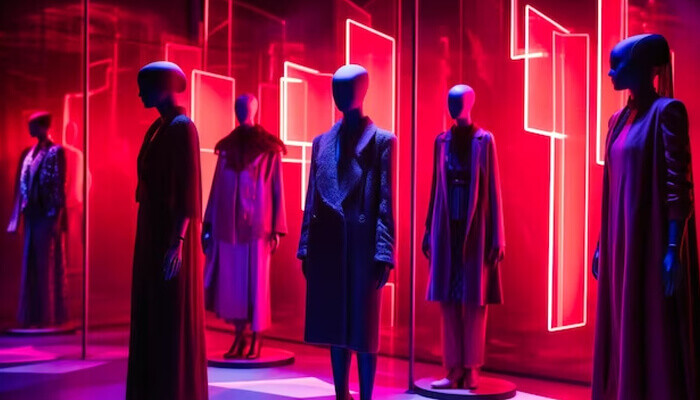In the years to come, the fashion industry will place a strong emphasis on sustainable fashion, technology, and futuristic designs. Adopting a broad spectrum of innovations—from substitute fabric selections to the incorporation of artificial intelligence—futuristic fashion persistently leads revolutionary methods in virtual clothing design and runway presentations.
Continue reading if you’re ready to learn more about the advantages of futuristic fashion and how it may revolutionize your business! We really hope you like the material.
Futuristic fashion: what is it?
The use of cutting-edge technologies to create clothing and accessories that combine innovation and style is known as futuristic fashion.
By combining contemporary production methods and characteristics that reflect the constant changes in technology and culture, this innovative approach aims to push the frontiers of design.
A fundamental feature of futuristic fashion is its dedication to sustainability; designers use recycled materials and eco-friendly processes to create items that do the least amount of environmental damage possible.
In addition, this fashion genre mirrors the impact of science fiction, popular culture, and technological breakthroughs in areas like artificial intelligence and robotics in both concept and design.
Top Futuristic Fashion Innovations
Future-inspired clothing is still a trend that will only grow in popularity as technology advances. Discover the key inventions that are transforming the industry below:
3D Design and printing
3D design tools are revolutionizing the way fashion designers create prototypes and samples. They allow for more accurate and faster design iterations. Additionally, 3D printing is being used to create unique and customized fashion pieces.
Personalization and mass customization
Technology enables brands to offer customized and personalized fashion items. Through data analysis and automation, fashion brands can offer personalized recommendations and even create custom-fit clothing. Consumers can have clothing and accessories tailored to their exact measurements, style preferences, and even design input. Mass customization is becoming more achievable through technology.
Digital Fashion
The concept of digital fashion is gaining momentum in the fashion industry. Some consumers are purchasing virtual clothing and accessories to use in the metaverse or for online gaming. This reduces the need for physical clothing and encourages a more sustainable approach to fashion.
Collaboration with tech companies
Fashion companies are increasingly partnering with tech companies to create innovative products. For example, collaborations between fashion brands and tech giants for smartwatches and AR glasses are becoming more common.
Sustainable practices
Technology is facilitating the adoption of sustainable practices, such as reducing water usage and waste in the dyeing process and developing innovative recycling techniques for old clothing.
Blockchain and supply chain transparency
Blockchain technology is being used to create transparent supply chains in the fashion industry. Consumers can trace the origins of clothing items, ensuring that they are ethically sourced and produced. This helps in combating issues like counterfeit products and unethical labor practices.
Artificial intelligence and machine learning
AI-powered algorithms are being used for trend forecasting, personalization, and supply chain optimization. Retailers are leveraging data analytics to better understand consumer preferences and make data-driven decisions, ultimately reducing waste and improving inventory management.
Sustainable materials and manufacturing
The conversation around climate change and sustainability is redefining the fashion industry in a big way. Technology is driving the development of sustainable materials and production processes. Innovations such as lab-grown leather and textiles made from recycled plastic bottles are becoming increasingly popular, reducing the fashion industry’s environmental footprint.
Virtual and augmented reality (VR/AR)
VR and AR technologies are enhancing the shopping experience by allowing customers to try on clothing virtually. Retailers and brands are using AR apps to enable customers to see how garments would look on them without physically trying them on, increasing convenience and reducing the need for returns.
Wearable technology
The integration of technology into clothing and accessories is a major trend in the fashion industry, particularly in futuristic fashion. Wearable technology includes smart garments that can monitor health and fitness, control temperature, or even change color and patterns based on user preferences. Examples include LED-embedded clothing and garments with built-in sensors.




